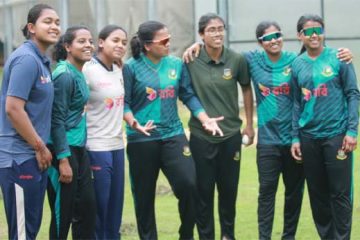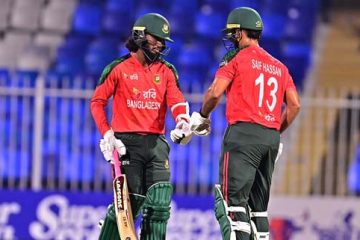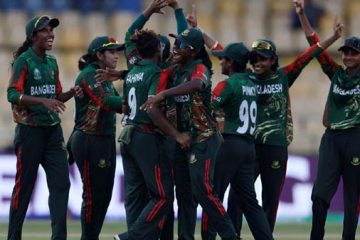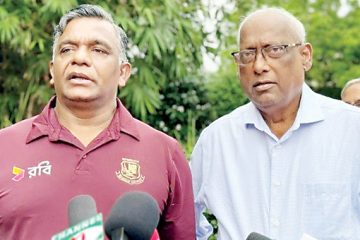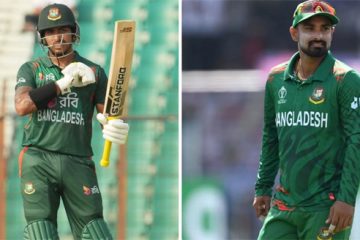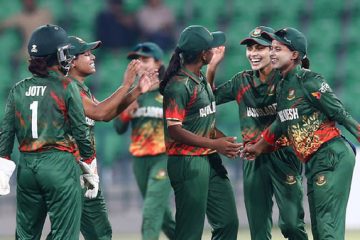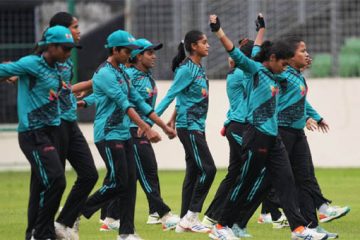The Bangladesh Cricket Board took the opportunity of Independence Day exhibition match on Monday to use the orange ball for the first time in a cricket match played in Bangladesh.
The experiment was made at the request of the International Cricket Council which is toying with the idea of using balls of different colours which can help them to introduce such balls in day-night Test matches.
The board took some balls from Pakistan for use in the match, which Bangladesh Green won by nine runs despite some individual brilliance from Bangladesh Red players.
Left-arm spinner Arafat Sunny grabbed five wickets for 39 runs to help Reds dismiss Greens for 218 runs in 40-over-a-side game before Anamul Haque (77) and Marshal Ayub (68) had hit half-centuries only to see their side stranded at 209–7.
Arafat later said that extra bounce that the new orange ball had generated helped him to some extent.
‘It has some extra bounce; otherwise, it is no different from other balls. The other thing that I have noticed is that the ball is much soothing to eyes for both bowlers and batsmen,’ said Arafat.
Anamul, who was part of the Bangladesh squad in the Asia Cup but did not play any game, said that playing with the orange ball was a different experience all together for him.
‘This ball does not run in the other field as fast as the other balls do,’ Anamul said. ‘It also loses it shine very quickly and becomes soft with every passing delivery, which I think is the reason for it not to run fast.’
‘An awkward sound after it hits the bat also makes it uncomfortable for the batsmen,’ he said.
Fielders complained that the seam of the ball was stitched with a hard thread that made it difficult for them to grab and they were worried whether it could cause injury to them.
The board’s tournament committee chair, Gazi Ashraf Hossain, was also of the opinion that the ball was not up to the mark and said that he would send the ball to Pakistan.
Only one ball was used in each innings, unlike in the recent one-day rule, which allowed fielding side to operate two new balls from two ends. Ashraf said that the balls lost its shape after 40 overs, which means it may not be conducive for a longer-version game.
Currently in Test match, fielding side can ask for a new ball only after 80 overs.
‘We used it just to see its viability and would look into the matter with great interest as the international cricket body is also looking at it with all their focus on it,’ Ashraf said.
-With New Age input



